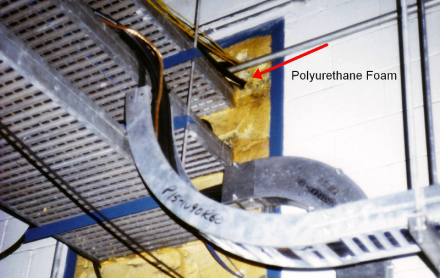A colleague of mine used to say he juggled a lot of balls; steel balls, plastic balls, glass balls, and paper balls. The trick was not to drop the glass balls. How do you know which is which? For example, suppose you were tasked with making sure a nuclear power plant was safe. What would be important? A fail-safe way to drop the control rods into the pile, maybe? A thick containment wall? Two loops of cooling so that only the inner loop gets radioactive? I’m not a nuclear engineer, so I don’t know, but ensuring electricians at a nuclear plant aren’t using open flames wouldn’t be high on my list of concerns. You might think that’s really obvious, but it turns out if you look at history that was a glass ball that got dropped.
In the 1960s and 70s, there was a lot of optimism in the United States about nuclear power. Browns Ferry — a Tennessee Valley Authority (TVA) nuclear plant — broke ground in 1966 on two plants. Unit 1 began operations in 1974, and Unit 2 the following year. By 1975, the two units were producing about 2,200 megawatts of electricity.
That same year, an electrical inspector and an electrician were checking for air leaks in the spreading room — a space where control cables split to go to the two different units from a single control room. To find the air drafts they used a lit candle and would observe the flame as it was sucked in with the draft. In the process, they accidentally started a fire that nearly led to a massive nuclear disaster.
Working with Inflammable Materials
You can build walls 30 inches thick, but you still need to get utilities in and out of the area. This was the case in the spreading room — the area where cables from all over the plant converged on the common control room.
The workers found a 2×4 inch opening near a cable tray. They stuffed the hole with foam and checked it again. There was still a draft and the flame was sucked into the hole, lighting the foam on fire. The inspector tried to knock out the fire, first with a flashlight and then with rags. By this time, the wall was on fire and several fire extinguishers were used to attack the problem but without success. The fire burned on. In fact, the fire extinguishers may have blown burning material out of the hole, making it even worse.
The Failure of the Fire Plan
Because of the efforts to put it out, the fire wasn’t officially reported for 15 minutes. There was also confusion about what phone number to use to report the fire. Perhaps most surprising is that for whatever reason, the operators elected to continue running the reactors despite the fire. According to the official report they then noticed that pumps in the emergency core cooling system were running:
Control board indicating lights were randomly glowing brightly, dimming, and going out; numerous alarms occurring; and …read more
Source:: Hackaday

